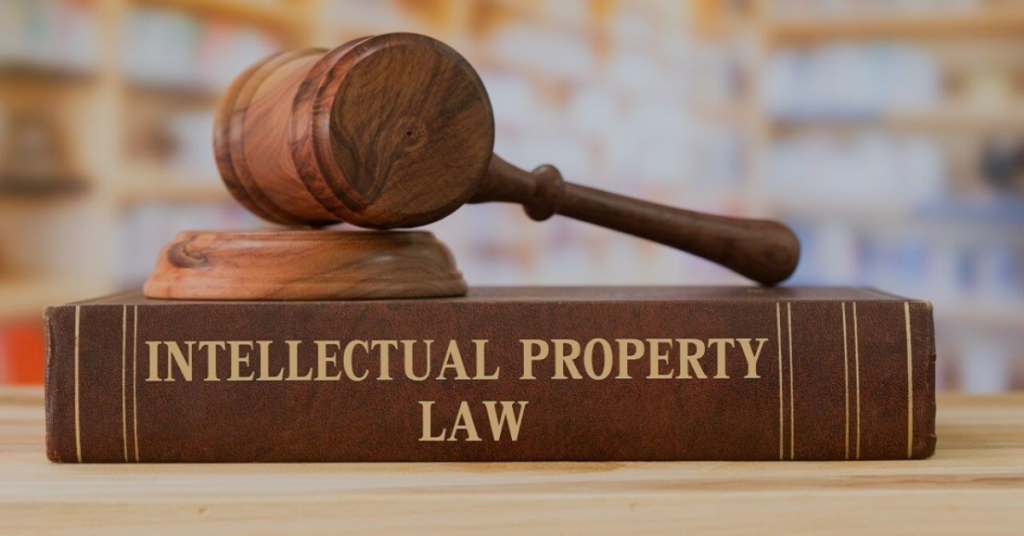Institution of Suits under the Civil Procedure Code, 1908: A Comprehensive Guide
The Civil Procedure Code (CPC), 1908, is the procedural bedrock of civil litigation in India. It lays down the rules and guidelines for conducting civil suits, ensuring fairness and efficiency in the administration of justice. A crucial aspect of the CPC is the "Institution of Suits," which defines how a civil suit is initiated and brought before a court of law. This article provides a detailed examination of the provisions governing the institution of suits under the CPC, 1908, focusing on key aspects, relevant case laws, and practical considerations.
Understanding the Concept of 'Suit'
Before delving into the specifics of institution, it's essential to understand what constitutes a "suit" under the CPC. While the Code doesn't explicitly define "suit," it is generally understood to be a civil proceeding initiated by the presentation of a plaint. A plaint, as described later, is a formal written statement outlining the plaintiff's claim against the defendant.
Essentially, a suit is a legal mechanism for resolving disputes between parties where one party (the plaintiff) seeks a remedy from the court against another party (the defendant). This remedy can range from monetary compensation to specific performance of a contract or a declaration of rights.
Order IV, Rule 1: Institution of Suits
The primary provision governing the institution of suits is Order IV, Rule 1 of the CPC. It states:
"(1) Every suit shall be instituted by presenting a plaint to the Court or such officer as it appoints in this behalf.
(2) Every plaint shall comply with the rules contained in Orders VI and VII, so far as they are applicable."
This rule establishes two fundamental principles:
- Mode of Institution: A suit is initiated solely by presenting a plaint to the court or an officer designated by the court.
- Compliance with Rules: The plaint must adhere to the rules outlined in Order VI (Pleadings Generally) and Order VII (Plaint) of the CPC.
Key takeaways from Order IV, Rule 1:
- Formal Presentation: The act of "presenting" the plaint is crucial. It marks the official commencement of the suit. This presentation must be made in the prescribed manner, usually by filing it with the court's registry.
- Jurisdiction: The plaint must be presented to a court with the proper jurisdiction (territorial, pecuniary, and subject-matter) to hear the suit. Filing a plaint in a court lacking jurisdiction renders the entire proceeding void. Sections 15 to 20 of the CPC deal with the place of suing, outlining the territorial jurisdiction of courts.
- Plaint as the Foundation: The plaint serves as the foundation of the suit. It's the document that sets forth the plaintiff's cause of action, the facts giving rise to the claim, and the relief sought from the court. Any deficiencies or irregularities in the plaint can significantly impact the outcome of the suit.
Essential Components of a Plaint (Order VII)
Order VII of the CPC details the essential contents of a plaint. Compliance with these provisions is mandatory for a plaint to be deemed validly instituted. Key requirements include:
-
Rule 1: Particulars to be contained in plaint:
- Name of the Court: The plaint must clearly state the name of the court where the suit is being filed.
- Name, Description, and Place of Residence of the Plaintiff: The plaint must identify the plaintiff accurately, including their name, a description that clarifies their identity (e.g., age, occupation), and their complete residential address. If the plaintiff is a minor or a person of unsound mind, this must be clearly stated, along with the name and address of their next friend or guardian.
- Name, Description, and Place of Residence of the Defendant: Similarly, the plaint must identify the defendant accurately. If the defendant is a minor or a person of unsound mind, the same requirements as for the plaintiff apply.
- Cause of Action and When it Arose: The plaint must clearly state the cause of action, which is the legal right or set of facts that entitle the plaintiff to bring the suit. The plaint must also specify when the cause of action arose. This is crucial for determining limitation periods (the time within which a suit must be filed).
- Facts Constituting the Cause of Action and When it Arose: This elaborates on the 'cause of action' requirement by demanding a detailed account of the events and circumstances that led to the suit. This section forms the core of the plaintiff's grievance and establishes the legal basis for their claims.
- Facts Showing the Court has Jurisdiction: The plaint must explicitly state the facts that establish the court's jurisdiction to hear the suit. This includes facts relating to the territorial jurisdiction, pecuniary jurisdiction (the monetary value of the claim), and subject-matter jurisdiction.
- Relief Claimed: The plaint must clearly and specifically state the relief the plaintiff seeks from the court. This could include monetary damages, specific performance, an injunction, a declaration of rights, or any other remedy available under the law. Vague or ambiguous prayers for relief can be fatal to the suit.
- Set-Off or Abandonment: If the plaintiff has allowed a set-off or relinquished any portion of their claim, this must be explicitly stated in the plaint. This is important for preventing future disputes about the scope of the claim.
- Statement of Value of Subject Matter: The plaint must include a statement of the value of the subject matter of the suit for the purposes of jurisdiction and court fees. This value is crucial for determining the court's pecuniary jurisdiction and the amount of court fees payable.
-
Rule 10: Return of Plaint: This rule deals with situations where the plaint is presented to a court that lacks jurisdiction. The court is obligated to return the plaint to the plaintiff for presentation to the proper court. This return must be accompanied by an endorsement stating the date of presentation and return, the reasons for returning the plaint, and the name of the party presenting the plaint.
-
Rule 11: Rejection of Plaint: This rule outlines the grounds on which a court can reject a plaint. These grounds are crucial as they can lead to the dismissal of the suit at the initial stage. The grounds include:
- Failure to Disclose a Cause of Action: If the plaint does not disclose a valid cause of action, the court can reject it. This means that even if the facts alleged are true, they do not entitle the plaintiff to any legal remedy.
- Relief Claimed is Undervalued: If the relief claimed is undervalued and the plaintiff fails to correct the valuation despite being required to do so by the court, the plaint can be rejected.
- Insufficiently Stamped: If the plaint is not properly stamped with the required court fees and the plaintiff fails to pay the deficiency despite being required to do so by the court, the plaint can be rejected.
- Suit Appears Barred by Law: If, from the statements in the plaint, the suit appears to be barred by any law, such as the law of limitation or res judicata, the plaint can be rejected.
- Plaint Not Filed in Duplicate (where required): In certain cases, the court rules may require the plaint to be filed in duplicate. Failure to comply with this requirement can lead to rejection of the plaint.
- Failure to Comply with Provisions of Rule 9: This rule requires the plaintiff to file sufficient copies of the plaint and summons for service on the defendants. Failure to comply with this can lead to rejection.
Consequences of Non-Compliance:
Failure to comply with the provisions of Order VII can have serious consequences, including the rejection of the plaint under Rule 11. A rejection of the plaint is distinct from the dismissal of the suit. While a rejected plaint can be presented again after rectifying the defects, a suit that is dismissed is generally barred from being re-filed on the same cause of action.
Pleadings Generally (Order VI)
Order VI of the CPC lays down the general rules of pleading. These rules are essential for drafting a valid and effective plaint. Some key principles include:
- Rule 1: Pleading to State Material Facts and Not Evidence: Pleadings, including the plaint, must state only the material facts on which the party relies for their claim or defense. Evidence to prove those facts should not be included in the pleadings.
- Rule 2: Pleading to State Material Facts Concisely: The facts must be stated concisely and with precision. Avoid unnecessary details or verbose language.
- Rule 4: Particulars in Certain Cases: In cases involving fraud, misrepresentation, breach of trust, willful default, or undue influence, the pleading must contain full particulars, including dates and items, where necessary. This requirement ensures that the opposing party is given adequate notice of the specific allegations against them.
- Rule 6: Conditions Precedent: Any condition precedent to the maintainability of the suit must be distinctly specified in the pleading.
- Rule 16: Striking Out Pleadings: The court has the power to strike out any pleading that is unnecessary, scandalous, frivolous, or vexatious, or that may prejudice, embarrass, or delay the fair trial of the suit.
Amendment of Pleadings (Order VI, Rule 17)
The CPC allows for the amendment of pleadings, including the plaint, at any stage of the proceedings. However, the court has the discretion to allow or disallow an amendment. The general principle is that amendments should be allowed if they are necessary for determining the real questions in controversy between the parties and if they do not cause undue prejudice to the other party. However, the court will not allow amendments that introduce a completely new cause of action or that would take away a vested right from the opposing party.
Practical Considerations and Best Practices
- Thorough Investigation: Before instituting a suit, conduct a thorough investigation to gather all relevant facts and documents. This will help ensure that the plaint is accurate, complete, and discloses a valid cause of action.
- Legal Advice: Seek legal advice from a qualified advocate to ensure that the plaint is properly drafted, that the court has jurisdiction, and that the suit is filed within the limitation period.
- Proper Valuation: Accurately value the subject matter of the suit for the purposes of jurisdiction and court fees. Undervaluation can lead to rejection of the plaint.
- Timely Filing: File the suit within the prescribed limitation period. Delay can result in the suit being barred by limitation.
- Compliance with Court Rules: Familiarize yourself with the specific rules and procedures of the court where the suit is being filed. This will help avoid unnecessary delays and complications.
Conclusion
The institution of suits is the first crucial step in the civil litigation process. A properly instituted suit, with a well-drafted and compliant plaint, sets the stage for a fair and efficient resolution of the dispute. A thorough understanding of the provisions of the Civil Procedure Code, particularly Order IV, Order VI, and Order VII, is essential for both plaintiffs and defendants to navigate the complexities of civil litigation effectively. Careful attention to detail, compliance with legal principles, and seeking expert legal advice are key to ensuring a successful outcome.




